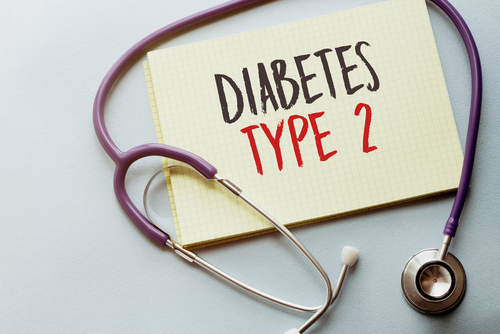
Since 2018, based on cardiovascular benefits seen in large clinical trials, recommendations for the treatment of type 2 diabetes mellitus in patients with chronic kidney disease (CKD) with estimated glomerular filtration rate (eGFR) ≥30 mL/min/1.73 m2 have included use of sodium-glucose cotransporter-2 (SGLT2) inhibitors. In 2019, results from the CREDENCE (Canagliflozin and Renal Events in Diabetes with Established Nephropathy) trial demonstrated reductions in kidney end points in patients with CKD stages 2-3 who were randomized to canagliflozin compared with placebo. SGLT2 inhibitors are considered first-line therapy for patients with type 2 diabetes and CKD.
Treatment with SGLT2 inhibitors has been adopted by the Veterans Affairs (VA) Health Care System for patients with type 2 diabetes and comorbid CKD, atherosclerotic cardiovascualr disease (ASCVD), or heart failure. However, studies have reported underutilization of those agents. Other studies have spotlighted racial and ethnic disparities in prescription rates for SGLT2 inhibitors, possibly contributing to the underutilization.
Parker Gregg, MD, MSCS, and colleagues conducted a retrospective cohort study to examine factors associated with prevalent SGLT2 inhibitor prescription and disparities in patterns of SGLT2 inhibitor prescription by race and sex. They also examined facility-level variation in prescription patterns among patients with comorbid CKD, type 2 diabetes, and ASCVD with indications for treatment with a SGLT2 inhibitor. Results were reported in the American Journal of Kidney Diseases [2023;82(1):53-62].
The study cohort included a national sample of US veterans with comorbid CKD, type 2 diabetes, and ASCVD who had a primary care visit between January 1, 2020, and December 31, 2020. The study exposures were race, sex, and location of individual VA. The outcome of interest was prescription for a SGLT2 inhibitor.
Associations of race and sex with SGLT2 inhibitor prescription were assessed using multivariable logistic regression. Median rate ratios ((MRR) were used to quantify facility-level variation in SGLT2 inhibitor prescription, expressing the likelihood that two randomly selected facilities would differ in their use of SGLT2 inhibitors among similar patients.
The researchers utilized national data from the US VA Corporate Data Warehouse to identify 174,443 patients with CKD, type 2 diabetes, and ASCVD across 130 VA locations and their affiliated outpatient clinics. The index date was the most recent primary care visit within the study period.
The VA Pharmacy Benefits Manager publishes criteria for use for restricted medication such as SGLT2 inhibitors. The criteria are applicable nationally across the VA system.
Of the 174,443 eligible patients, 11.5% (n=20,024) were prescribed an SGLT2 inhibitor. Veterans who received a prescription for a SGLT2 inhibitor were younger than those who were not prescribed an SGLT2 inhibitor (72.0 years vs 75.9 years; P<.001). The cohort was predominantly male: 98.3% (n=19,648) in the SGLT2 inhibitor group and 98.0% (n=151,296) in the SGLT2 inhibitor nonuser group.
The two groups differed in race, with SGLT2 inhibitor users comprising 80.0% White and 12.3% Black or African American patients; the non-SGLT2 inhibitor group included 79.7% White and 12.6% Black or African American patients (P<.001).
Patients in the SGLT2 inhibitor group were more likely to have systolic heart failure (26.5% vs 20.3%) and ischemic heart disease (86.3% vs 80.7%) but less likely to have peripheral arterial disease (23.7% vs 26.5%) and ischemic cerebrovascular disease (25.8% vs 28.%),compared with the non-SGLT2 inhibitor group (P<.001 for all comparisons). Patients in the SGLT2 inhibitor 2 group were also more likely to be prescribed statins, high-intensity statins, insulin, biguanides, thiazolidinediones, dipeptidyl-peptidase 4 inhibitors, glucagon-like peptide receptor agonists, ACEI or ARB, and beta-blockers (P<.001 for each).
In the multivariable model, Black or African American patients were less likely to be prescribed an SGLT2 inhibitor than White patients (adjusted odds ratio [aOR], 0.87; 95% CI, 0.83-0.91; P<.001). Women were nearly half as likely to receive a prescription for an SGLT2 inhibitor compared with men (aOR, 0.59; 95% CI, 0.52-0.67; P<.001). Factors associated with higher odds of being prescribed an SGLT2 inhibitor were younger age, ischemic heart disease, use of concomitant medications, higher body mass index (BMI), higher hemoglobin A1c, and higher number of visits with a primary care provider, cardiologist, or endocrinologist. In those with more nephrology visits in the proceeding 12 months, the odds of SGLT2 inhibitor prescription were lower.
Analyses of disparities by race demonstrated that Black and African American patients were less likely than White patients to receive a prescription for an SGLT2 inhibitor among subgroups by age, sex, comorbidities, or clinical characteristics. There were no differences between Black or African American and White patients among women, those without hypertension, or those with heart failure, BMI of <18.5 kg/m2, an estimated glomerular filtration rate of 30 to 44 mL/min/1.73 m2, hemoglobin A1c of >9%, or who were receiving care at a teaching facility.
The rates of SGLT2 inhibitor prescriptions varied across individual VA facilities; the mean facility-level rate was 11.2% of patients being prescribed an SGLT2 inhibitor. The crude MRR was 1.35 (95% CI, 1.30-1.40). Following adjustment for covariates, the MRR was 1.58 (95%CI, 1.48-1.67), indicating a residual 58% variation in treatment with SGLT2 inhibitors for two similar patients treated at two random facilities.
Facility-level variation was examined among Black or African American patients (MRR, 1.55; 95% CI, 1.47-1.68), White patients (MRR, 1.57; 95% CI, 1.47-1.66), women (MMR, 1.40; 95% CI, 1.28-1.51), and men (MMR, 1.57; 95% CI, 1.48-1.67).
Limitations to the study cited by the researchers included not assessing albuminuria as a key risk factor for progression of CKD that may impact clinical decision making regarding prescription of SGLT2 inhibitors, having only one measurement of eGFR prior to the index date, the lack of clinical data from 2021 for analysis, and the inability to identify study participants who may have been ineligible for prescription of an SGLT2 inhibitor.
In summary, the authors said, “The prescription rate of SGLT2 inhibitor for likely eligible patients was low, with substantial variation between individual facilities. Ischemic heart disease, concomitant medication prescription, higher BMI, and higher hemoglobin A1c were independently associated with SGLT2 inhibitor prescription. There were evident racial and sex disparities in SGLT2 inhibitor prescription that persisted among subgroups. The underlying reasons for racial and sex disparities must be identified and addressed to ensure equitable access to these important medications. Further health services research should address the barriers to SGLT2 inhibitor prescription to increase guideline-based practice and improve long-term cardiovascular and kidney outcomes in patients with CKD.”
Takeaway Points
- Researchers reported results of a retrospective cohort study among US veterans examining factors associated with sodium-glucose cotransporter-2 (SGLT2) inhibitor prescription and disparities by race and sex and facility-level variation in prescription patterns.
- Black or African American patients were less likely to receive a prescription for an SGLT2 inhibitor compared with White patients (odds ratio, 0.87; 95% CI, 0.83-0.91).
- There was an unexplained 58% variation in treatment between Veterans Affairs facilities, independent of patient and facility characteristics.







 © 2025 Mashup Media, LLC, a Formedics Property. All Rights Reserved.
© 2025 Mashup Media, LLC, a Formedics Property. All Rights Reserved.